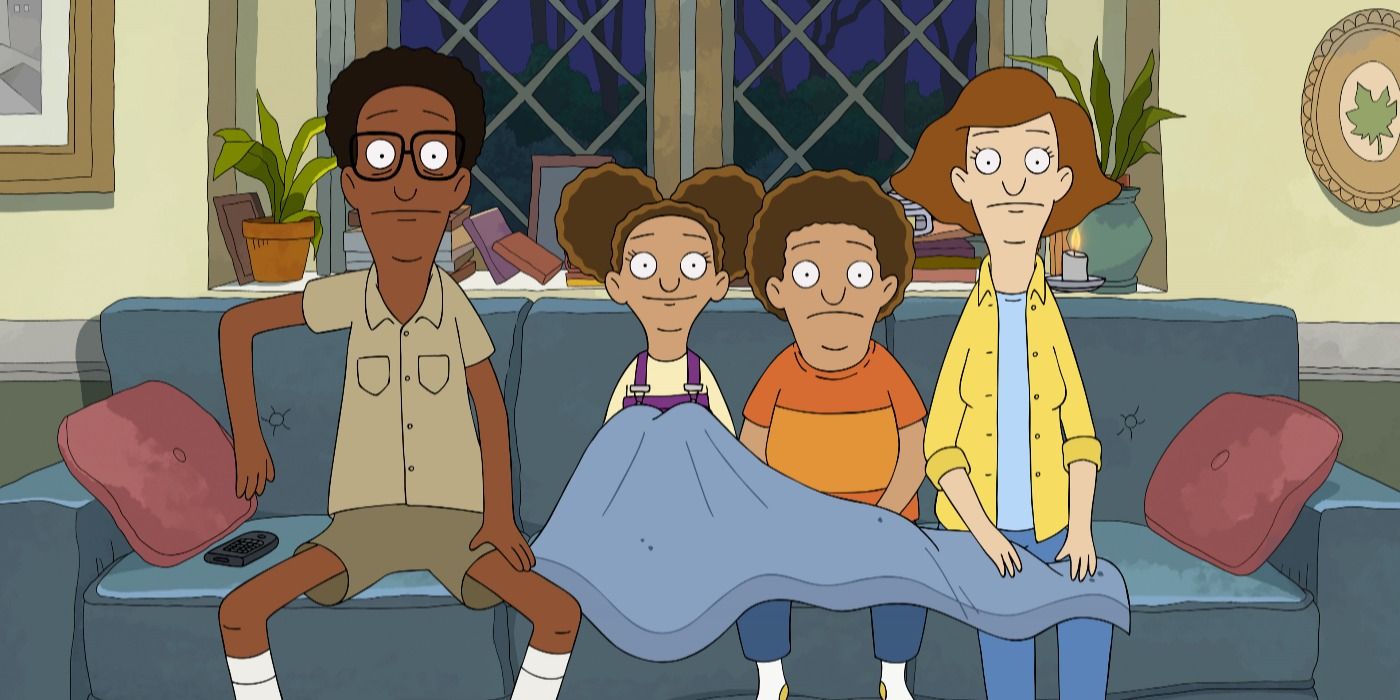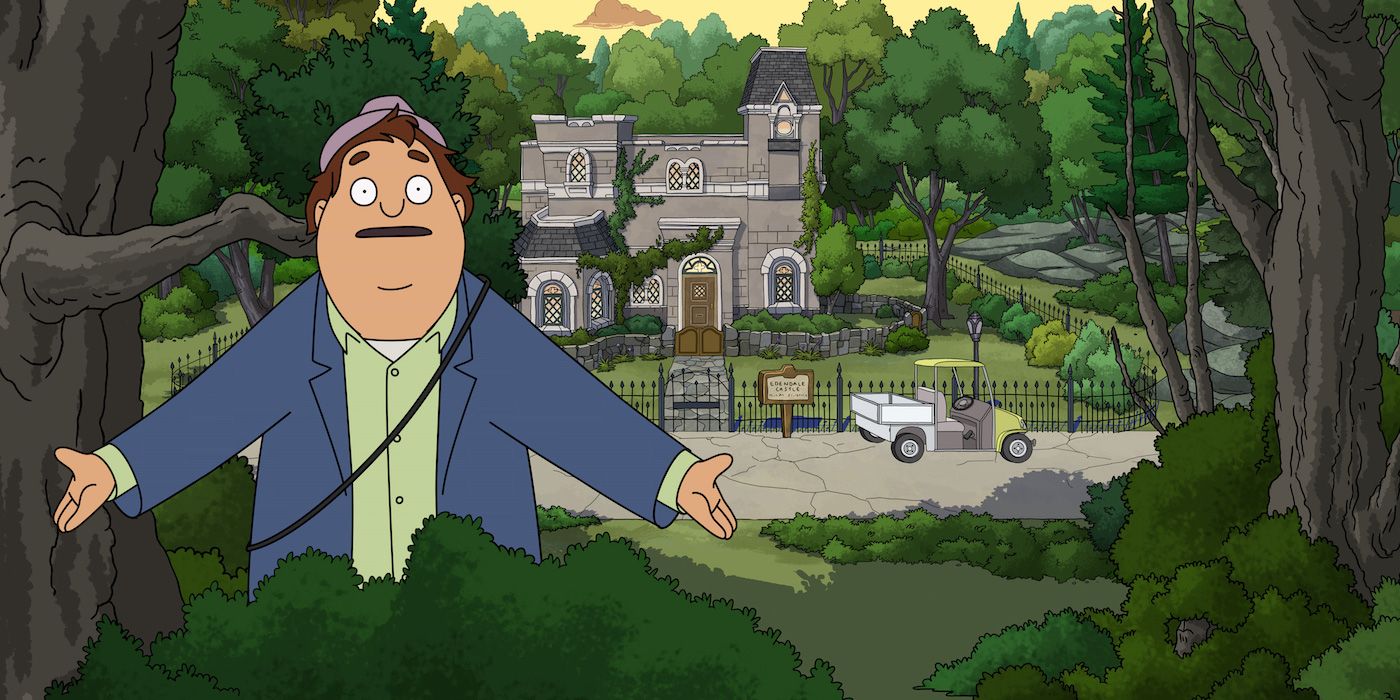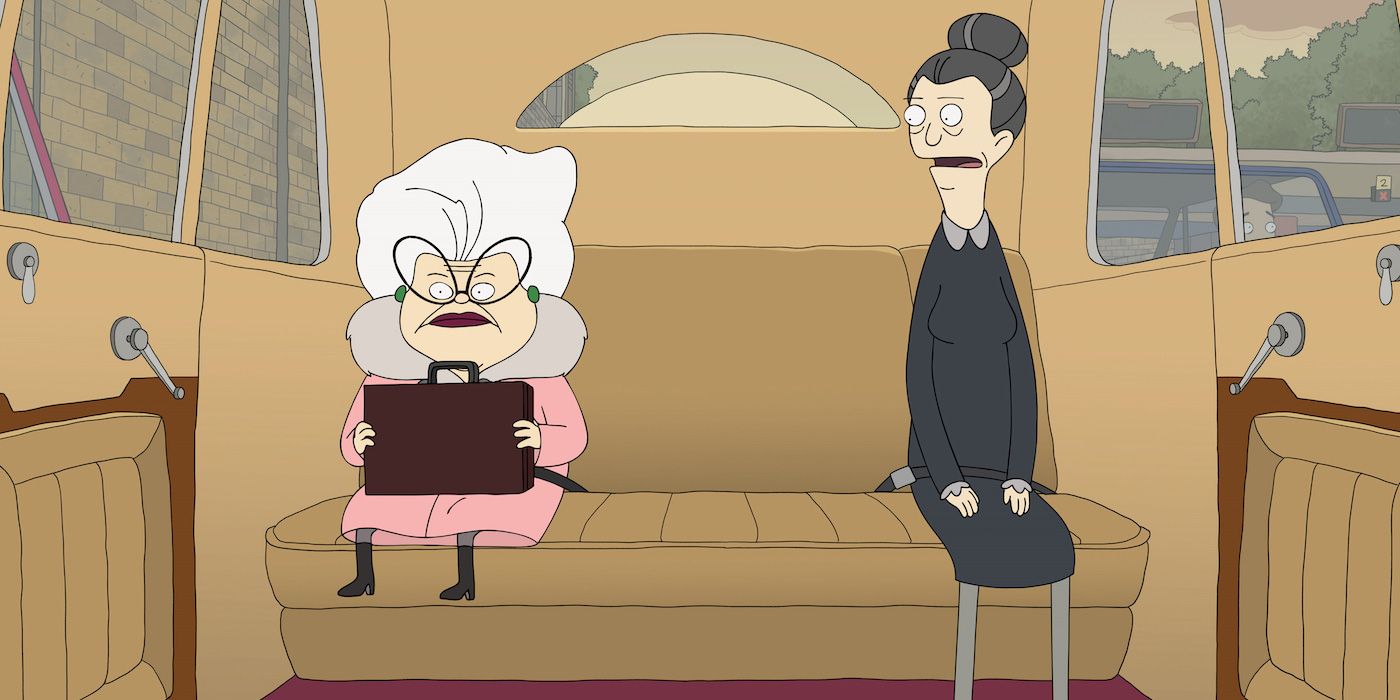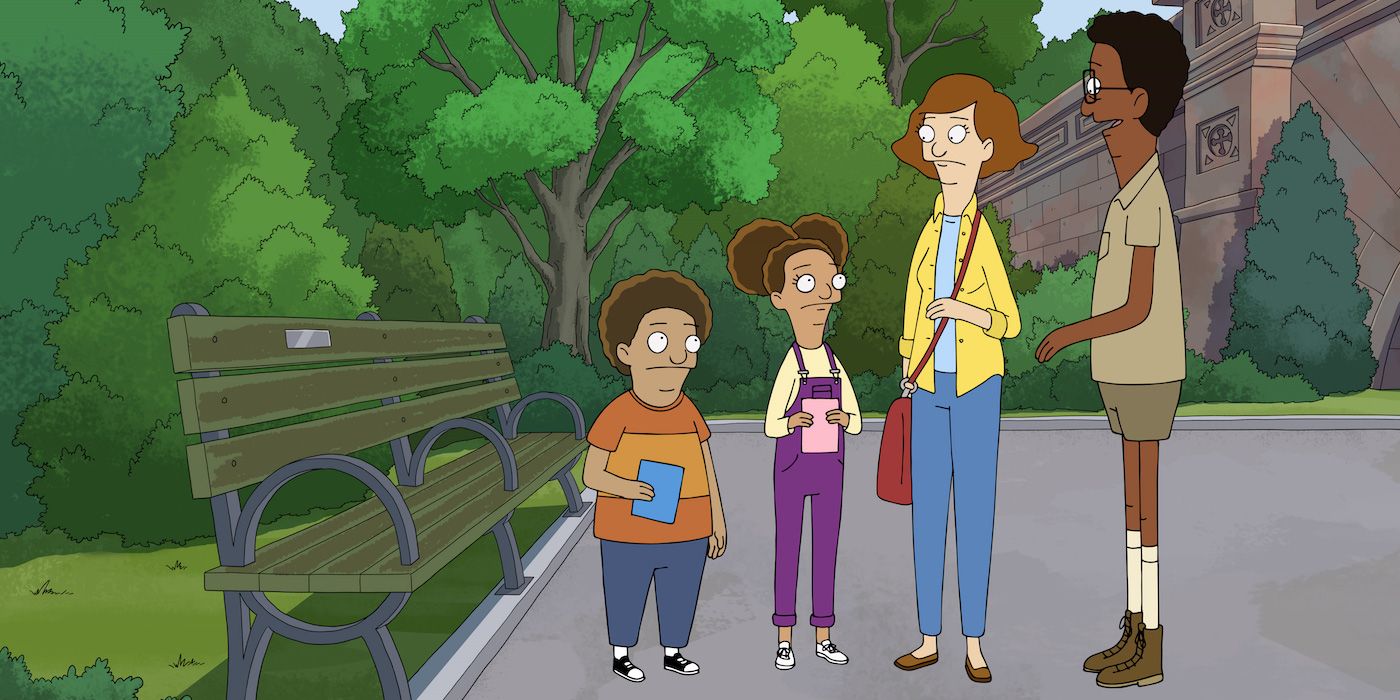So much of Central Park feels like a hug. The Apple TV+ animated musical comedy series is wholesome, loving, sincere, and bursting at the seams with joy. It's comfort food prepared just the way you like it.
None of this has changed for Season 2, of which eight episodes were viewed for this review, nor would I want it to. But some things have changed somewhat dramatically, not only for the Tillerman-Hunter family, but for the form they exist in. These changes and experimentations, which tend to circle back to some form of the comfortable status quo, are generally welcome, encouraging additions to the path of the show. Only occasionally, but noticeably, do these changes conflict with the show's overall need for things to stay the same, highlighting the weaknesses of both storytelling impulses.
The Tillerman-Hunter family — mom Kathryn Hahn, dad Leslie Odom Jr., son Titus Burgess, and daughter Emmy Raver-Lampman (replacing Season 1's Kristen Bell) — live in a backhouse in Central Park, that New York mainstay maintained by Odom's hard-working, neurotic patriarch. As they live, laugh, learn, love, and more than occasionally belt out immaculately arranged tunes, the shadowy specter of an evil socialite, Stanley Tucci, and her put-upon assistant, Daveed Diggs, looms over them, threatening to buy the park. Also looming over this eclectic cast, but in a much less threatening manner? Josh Gad's busker, a cheeky, seemingly omniscient narrator who sets up the base realities of scenes while playing the violin and singing his heart out.
All of these dynamics are carried over seamlessly from the first season, all used to generate episodes packed with seamlessly produced warmth, rat-a-tat jokes, and songs. Season 1 already felt confidently engineered despite being the show's first steps; here, with the machinery fully in place, the show goes. The cast popcorns off of each other with relentlessly paced dialogue delivery, rivaling the likes of Tina Fey comedies in their joke density and efficiency. Characters spend a ton of time doing without a ton of time explaining, understanding correctly that we understand these characters well enough to not need hand-holding. And speaking of hand-holding, Central Park's Season 2 zooms in on its already prevalent earnestness, becoming unafraid to push pause on jokes for the sake of love, companionship, and empathy (though at its best, it combines the jokes with the earnestness, using one to mix with the other like a refreshing cocktail).
And the songs! The songs are back, and they are exquisite. Alternating between heart-bursting explosions of yearning and goofy-ass variety numbers of nonsense, the tunes are broadened in genre exploration, arrangement variety, and even chordal construction (I only counted one "major I to minor iii" progression, a recurring motif in Season 1). From Diggs and company speedily rap-singing all the ways to distort the word "low-key" to Odom and Hahn harmonizing beautifully about a key moment of their romance, these tunes have something for everyone, giving every member of the cast a chance to shine brightly — especially the brand new Raver-Lampman, who performs her numbers with both expected skill and unexpected invention (one key number features a flip into her head voice that devastated me every time). The stable of splashy songwriters has grown as well, with names like Diggs, Gad, Rufus Wainwright, They Might Be Giants, Ingrid Michaelson, Rafael Casal, John Cameron Mitchell, Tank and the Bangas, and Don't Stop or We'll Die penning numbers for the season. These famous folks acclimate themselves beautifully to the milieu of the overall piece, but for my money, the MVP songwriters are the in-house team of Kate Anderson and Elyssa Samsel. Without fail, every time I found a number exceptional, I saw their name in the credits. This duo elevates the series immensely, and they have a bright future ahead of them.
But Season 2 has more in store beyond its previously-established boundaries, no matter how comforting those boundaries are. Like Bojack Horseman, Season 2 offers several experimental, even self-contained feeling episodes that poke around with animation style, tone, character focus, and emotional motivation. These experiments are generally welcome, with two unorthodox episodes in particular soaring to powerful highs, even while burrowing into some gnarly lows, resulting in Pixar-esque pieces of catharsis. One, focused on Tucci and a guest performer I shan't spoil, shades his oft-villainous character remarkably, even sorrowfully, before hard-shifting into a silent, short film-feeling denouement that brought tears to my eyes immediately. Another, which renders the entire Tillerman-Hunter family in a surprising form of animation, brings them all to intense precipices before concluding in one of the most purely empathetic sequences I've seen in a TV comedy.
But the prevalence of these experiments can jut up against the show's more set-in-stone elements somewhat creakily. Overall, the style of background animation is freer, bolder, and more adventurous than in Season 1; it's common for a song to jump into a startling piece of visual exploration easily and vividly. But these pieces of background craft highlight how little experimentation there is in the character animation. While their worlds flow and fly around them, while the lyrics they're singing represent such raw power, the characters tend to stare blankly at the camera, their mouths not even upturning to represent a smile, or any show of emotion. There are such rich interior life explorations in these episodes, from the writing to the songs to the performances, that the blankness of the character animations starts to feel like a bug, not a feature.
Additionally, sometimes the aforementioned quick pace of a "half-hour comedy" constrains the more exploratory impulses of Central Park Season 2. This is unfortunately the most prevalent in Raver-Lampman's take on the Molly character, especially in how her work conflicts with what the scripts want to say about the character. Raver-Lampman plays her with a sense of confidence, because the pace seems to demand it of her. However, the character is written, from her biggest arcs to most throwaway jokes, to be wholly unconfident, unsure, and awkward. We want to watch Molly struggle through her issues and grow, but Raver-Lampman's take seems fully grown from the start, giving the material a sense of disingenuousness. However, as the season moves on, two things begin to happen: Raver-Lampman allows vulnerability to crack through her work, especially in the Molly-centered episodes, and the episodes allow Molly to grow, to give her a subtle arc that lines up with Raver-Lampman's inherently changed approach to the character. There's some "getting used to" being done by all parties, and it is a process more than worth it.
Central Park Season 2 moves backward and forward in its relationship to progress, change, and process. It aims to feel good and simple, while reminding us how uncomfortable and complicated it can be to attain those feelings. It's jam-packed with invention in performance, craft, structure, songwriting, and raw comedic power. It will fling you on a journey while staying exactly where you are. Just like these characters.
Grade: B+
Central Park begins streaming on Apple TV+ June 25, 2021.




